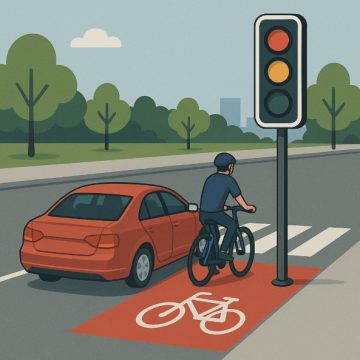The Reform of the Belgian Civil Code: Applications in Road Accidents of the Expanded Concept of the Keeper of a Defective Thing
In the context of civil liability, Article 1384, paragraph 1, stipulated that the keeper of a thing (i.e., the person with the power to control and manage it) could be held liable for damages caused by that thing, even in the absence of personal fault. This article applied to numerous types of damages caused by things, particularly when they were affected by a defect or a safety issue.
A typical example of the application of this article is the liability of road managers in cases of insufficient road maintenance. For instance:
- When an accident is caused by a deformation, a pothole, or another anomaly in the road, victims can invoke the liability of the road’s keeper (often the municipality or the managing authority).
- The victim does not need to prove that the manager committed a fault by neglecting to maintain the road. They only need to prove that the road, as a thing under the keeper’s control, presented a defect or an abnormal danger that caused the accident.
In other words, Article 1384 already allowed the attribution of liability to the keeper of a thing for damages caused by a defect in that thing, without the victim having to demonstrate a direct fault by the keeper. This provided enhanced protection for victims by simplifying their compensation process.
What Changes with the New Civil Code (Article 6.16): Expanded Liability for Defective Things
The reform of the Belgian Civil Code, which will come into effect in 2025, replaces Article 1384 with new provisions on liability for defective things, notably Article 6.16. This new article clarifies and strengthens the liability of the keeper of a tangible thing (such as a vehicle, equipment, or road) affected by a defect. Here is how this liability is expanded and clarified compared to the regime under Article 1384:
- Clearer definition of the concept of “defect”:
Article 6.16 provides a precise definition of what constitutes a defect. It states that a tangible thing is “defective” when it does not provide the safety that one may reasonably expect under the given circumstances. This definition is more specific than that of Article 1384 and covers all cases where the thing is dangerous under normal conditions of use. It includes manufacturing defects, maintenance deficiencies, and even natural wear and tear if it makes the thing dangerous. - Stricter no-fault liability for the keeper:
The new text formalizes the keeper’s “no-fault” liability as soon as a defect in the thing is established. The keeper (the person exercising control and management over the thing) will be held strictly liable once a defect is proven, without the victim needing to demonstrate negligence. This reinforces the “objective” nature of this liability: it is solely linked to the existence of a defect in the thing, regardless of any fault by the keeper. - Possible extension to a broader range of situations:
By specifying that a defect is “any flaw that makes the thing dangerous under normal conditions of use,” the scope of Article 6.16 could cover various situations, including more everyday cases. For example, in road traffic situations, this could more systematically apply to accidents caused by technical defects in a vehicle or by degraded road conditions. As long as the victim proves that the damage was caused by a lack of safety, the keeper’s liability can be engaged. - Limitations and exemptions:
The keeper can only be exempted from this liability by proving that an external cause led to the damage (e.g., an unforeseeable event or the exclusive fault of the victim). However, proving such an external cause is often difficult, which further strengthens the scope of liability.
Implications for Drivers and Infrastructure Managers
Article 6.16 could therefore have concrete effects for drivers and public infrastructure managers by strengthening their liability in certain situations:
- For drivers: They could be held strictly liable for damages caused by a defect in their vehicle, whether it is a manufacturing defect or a lack of maintenance. For example, if an accident is caused by defective brakes or worn tires, the driver’s liability could be engaged even in the absence of fault under Article 6.16.
- For road managers: Article 6.16 also reinforces the liability of public infrastructure managers (such as municipalities for roads) by clarifying that the presence of a defect in a road (a pothole, deformation, etc.) can trigger their liability. This could lead to increased accountability for local authorities in maintaining their infrastructure to prevent situations where a road defect causes damage.
Conclusion: Expanded and More Objective Liability
In summary, Article 6.16 expands liability for defective things in several ways:
- It clarifies the concept of “defect,” including all flaws that compromise safety under normal conditions.
- It establishes strict no-fault liability for the keeper, as long as a defect is proven.
- It could potentially apply more systematically in areas such as road traffic or infrastructure maintenance, where “defective things” (vehicles, roads) are common.
Although this liability is not “objective” in the sense of automatic responsibility for all accidents, it constitutes a form of no-fault liability. It could have significant implications for safety and prevention by encouraging drivers and managers of public property to exercise greater vigilance to avoid any risk of defect or flaw.
For additional information, feel free to contact me.




